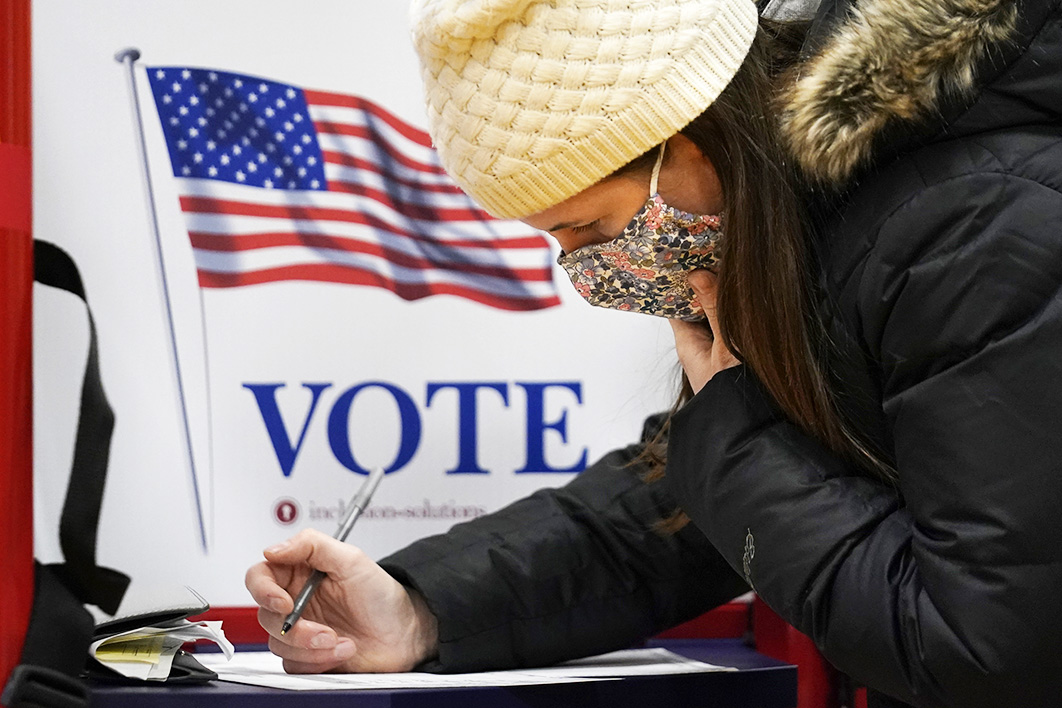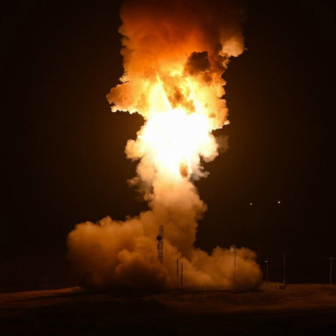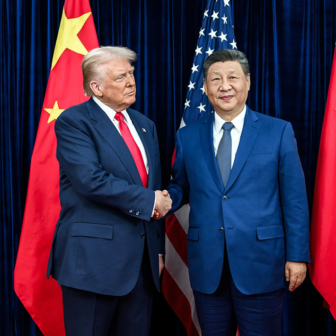While Australians were glued to Joe Biden’s defeat of Donald Trump and the engrossing political theatre of Washington, DC — “Hollywood for ugly people,” as the saying goes — other developments were bringing American democracy closer to how we vote in Australia.
Preferential voting — known as “ranked-choice voting” in America — has now been adopted by ballot initiative (a kind of citizens-initiated referendum) in two states: Maine, in 2018, and now Alaska for all post-2020 elections.
How did the two northernmost states in the Union come to adopt a voting system that has been used for over a century in Australia but remains largely unknown in the United States? Like many aspects of American politics today, the answer is to be found in the increasing dysfunction and polarisation of American electoral democracy.
Although it would typically elect the same candidate as a standard US-style plurality contest, preferential voting offers politicians a different route to victory, and thus different incentives.
In close contests, as Australian politicians know, it pays to attract not just a strong primary vote but also a healthy flow of preferences from minor parties and independent candidates. Labor, for instance, would never win a federal election in the absence of preference flows from the roughly 10 per cent of the electorate who support the Greens — which explains the unwillingness of Anthony Albanese and Mark Butler to indulge Joel Fitzgibbon’s road-to-nowhere plan to renege on Labor’s climate commitments.
Transferred to the United States, preferential voting means that a supporter of the Libertarian Party — which garnered 1.2 per cent of the national vote in 2020 — could avoid helping split the conservative vote (as arguably happened in several states this time). Similarly, America’s Green voters could give their second preference to the more pro-environment of the major parties, just as their counterparts do in Australia.
But a newfound embrace of minor parties is not what is driving this reform. Rather, ranked-choice voting is seen as a way to shift the tone of American politics in a more civil and cooperative direction, or at least a less negative and polarising one.
America’s combination of primary elections with plurality (and non-compulsory) voting means that centrist voters face an invidious choice at the ballot box. In 2020, this was typically between a pro-Trump Republican and an increasingly left-wing Democrat.
The political centre, where many American voters still profess to be, has emptied out. As former Texas agriculture commissioner Jim Hightower put it, “There’s nothing in the middle of the road but yellow stripes and dead armadillos.”
Where compulsory and preferential voting pushes Australian politicians to contest the political centre, the incentives push the other way in the United States — towards mobilising one’s base vote.
Party primaries are prone to capture by radicals on both sides who want to ensure that only “pure” ideologues and true believers nominate. The most effective way to do this is by advocating the kind of extreme policies that are highly attractive to party diehards but may repel everyone else.
By rewarding those with broader appeal, preferential voting can deter such extremism. Candidates who command a solid base of support but attract few preferences from others — Donald Trump, for example — are less likely to be nominated and win under preferential voting than under plurality rules. Switching to preferential elections at all levels, from primaries to presidential contests, is thus seen as a way to bring back the “missing middle” in American politics.
While the idea of giving voters the opportunity to rank candidates is familiar and indeed unremarkable to Australians, it is being hailed as a major reform in the United States. As democracy scholar Larry Diamond put it, “Many reforms are needed, but ranked-choice voting can be the Archimedean lever of change, enabling a small force to move a great weight.”
Maine shows how this can work in practice. After repeated split-vote wins by divisive Republican governor Paul LePage — who styled himself as “Trump before Trump” — a grassroots movement pushed for and won a ballot initiative in 2016 to introduce preferential voting. When this was stymied by the legislature, Maine voters forced the change via a special “people’s veto,” overriding the politicians.
In Maine’s first use of ranked-choice, in the 2018 midterm elections, Democrat Jared Golden won the state’s knife-edge 2nd congressional district by securing enough preferences from two Independents to leap over the Republican incumbent.
Golden’s receipt of what turned out to be an election-deciding flow of preferences came after he publicly pledged to reciprocate with his own rankings, signalling to Democrat voters to do the same. His Republican rival, by contrast, spurned the idea and hence received few preference flows from excluded candidates — becoming the first incumbent to lose the district in over a century.
While cooperative signalling of this kind can make sense under preferential voting, under plurality rules there is nothing to be lost by “going negative” in campaigns.
Golden’s upset victory led to a series of legal challenges (and the Republican state secretary’s scrawling “stolen election” on the official certification of results), but the system was upheld by the courts and Golden was elected again, with much less drama, in November 2020.
At that same election, on the other side of the continent, Alaskan voters narrowly approved a proposal to adopt preferential voting as well, along with new disclosure requirements to prevent “dark money” in politics. In a new and potentially influential twist, the state’s preferential contest will take place after a single primary election for all parties, with the four best-polling candidates going on to a general election in which voters can rank from one to four.
The Alaska campaign benefited from a cross-party coalition of Independents, Libertarians, Democrats and some Republicans. By contrast, a similar initiative in Massachusetts championed predominantly by the Democrats failed to win majority support on 3 November.
Whether preferential voting can actually lower the temperature of American politics in the hyper-polarisation of the post-Trump era remains to be seen. Studies from other jurisdictions that use ranked ballots — including Australia, Papua New Guinea and over a dozen American cities and local governments — have found that they produce more moderation than plurality elections. But these either tend to be non-partisan contests, in the case of local elections, or have very different political cultures.
Nonetheless, leading American thinkers have seized on the idea of preferential voting as “the leading institutional reform that could potentially reduce polarisation in the country,” as the high-profile political scientist Francis Fukuyama put it. Others endorsing preferential voting include Barack Obama, Elizabeth Warren, the late John McCain, newspapers including the New York Times, Washington Post, Boston Globe and Economist, five winners of the Nobel Prize in economics, and nine winners, including Fukuyama, of the Skytte Prize, the highest honour in political science.
Amid this heavyweight support, the unlikely duo of Maine and Alaska — blue-collar, rural and remote — have thus become testing grounds for whether a seemingly modest electoral reform can help arrest America’s democratic decline. Despite their locations on America’s periphery, they could be at the centre of national democratic renewal. •




